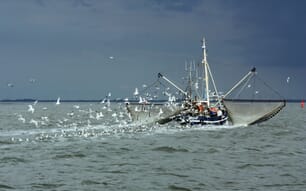No new protections for Pacific bluefin tuna
The Pacific bluefin tuna population remains in a severely depleted state: It is overfished, and overfishing continues on a stock that is at four per cent of its unfished levels.
“The failure the IATTC to agree to reduce catch limits or adopt a long-term rebuilding plan for Pacific bluefin tuna leaves the species at risk of population collapse,” said Amanda Nickson, director of global tuna conservation for The Pew Charitable Trusts.
“It is high time to look at the prohibition of international trade through the Convention on International Trades in Endangered Species [CITES] as a means to protect this highly depleted species.”
Despite the lack of action at IATTC, Mexico announced that it will reduce its catch of Pacific bluefin by 250 metric tons next year, which would bring the overall harvest closer to scientifically recommended levels.
Other countries could also choose to act outside of the Commission process and implement additional conservation measures.
No new protections for silky sharks
A measure to protect silky sharks was withdrawn due to lack of consensus. The IUCN Red List of Threatened Species classifies silky sharks in the eastern Pacific as vulnerable to extinction.
“There is clear scientific evidence that the vulnerable eastern Pacific silky shark population is declining dramatically due to capture in all of the region’s tuna fisheries. It’s time for the countries that are serious about shark conservation to support a CITES Appendix II listing for silky sharks next year in South Africa,” Ms Nickson said.
A CITES Appendix II listing would mean that only sustainably caught silky sharks can be traded or imported from the high seas. The species was recently listed under Convention on the Conservation of Migratory Species of Wild Animals.
Retention of mobuild rays is now prohibited in eastern Pacific tuna fisheries
IATTC members did however reach consensus on a proposal to protect mobulid rays, which are vulnerable to overfishing. The measure prohibits the retention of rays caught incidentally – with exemptions for some artisanal vessels – and outlines a range of techniques that help fishers with live release.
“This is a good week for mobulid rays in the eastern Pacific,” Ms Nickson said. “Overfishing is a major threat to the survival of these important populations and the measure that is now in place will increase the opportunity for rays to survive getting caught up in fishing gear.”
No regional standard for port State measures
IATTC members have been discussing proposals on a regional standard for port State measures since 2010 but have not reached an agreement. Port State measures are a highly efficient and cost-effective tool to ensure transparency in the sector and dis-incentivize illegal, unreported, and unregulated (IUU) fishing.
Ms Nickson said: “Right now the government agency responsible at any given port has no international obligation to inspect a vessel known to have engaged in nefarious activities. This is a major loophole and it has been left wide open for too long. While individual nations can take action, only regional cooperation will bring about measurable change.”
Other measures
- IUU vessel list – Members agreed on a measure that clarifies many of the existing provisions on how to list vessels that are shown to have carried out illegal fishing activities and how to delist them when they are no longer linked to these activities. It also expands the scope to cover all types of vessels targeting all IATTC-managed species. However, the measure includes an exemption for fishing boats less than 24 meters.
- FADs – In an effort to track usage, members agreed that fish aggregating devices (FADs) must be physically marked beginning in 2017. Scientists will review data to come up with potential management measures beginning in 2018. The measure also establishes a FAD working group, meaning the IATTC joins the three other tuna RMFO’s in establishing such a group.
- Hammerhead sharks – Members could not agree on a measure to prohibit the retention of hammerhead sharks. Scalloped, great, and smooth hammerheads are included in CITES Appendix II.
- Longline observers – Observer coverage onboard longline vessels will not increase.



